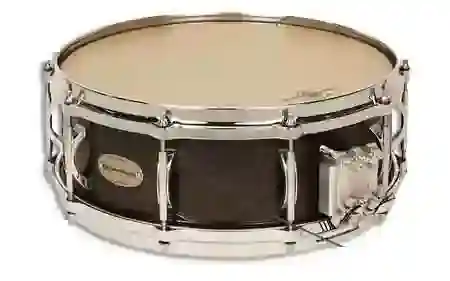Construction and function » snare drum » Philipp Dangas
Construction and function of the snare drum
The snare drum has basically the same structure as the bass drum. The resulting special features are based on their characteristics as a treble instrument of the drum family. The snare drum has a diameter of about 35-38 cm and a height of about 15-19 cm.
This is used in the symphonic orchestra. It is made of metal, just like the fur ring and the rim. The skins are mostly made of calfskin. The batter head is usually thicker than the resonance head. The string cover is stretched diagonally over the resonance head. This consists of 8 to 12 strings that lie firmly on the resonant head.
The tension screws of the snare drum are each mounted on a common axle. The snare drum is struck with 2 wooden mallets. They have a length of about 38 cm. The heads of the drumsticks must be strongly pronounced. The materials used are ebony, jaccaranda, brazil red or hickory.
Download size: 174 kilobytes
Table summary of the components of percussion instruments
The following table lists the components of percussion instruments shown. Thereby drumsticks, batter heads, shells and pedal briefly described.
The structure of a snare drum in large representation

Snare drums may be made from various wood, metal, acrylic, or composite, e.g., fiberglass materials. A typical diameter for snare drums is 14 in (36 cm). Marching snare drums are deeper (taller) in size than snare drums normally used for orchestral or drum kit purposes, often measuring 12 in deep (tall). Orchestral and drum kit snare drum shells are about 6 in (15 cm) deep. Piccolo snare drums are even shallower at about 3 in (7.6 cm) deep. Soprano, popcorn, and firecracker snare drums have diameters as small as 8 in (20 cm) and are often used for higher-pitched special effects …Referenz: https://en.wikipedia.org/wiki/Snare_drum
Internal search function
| Name | Value | Delete |
|---|